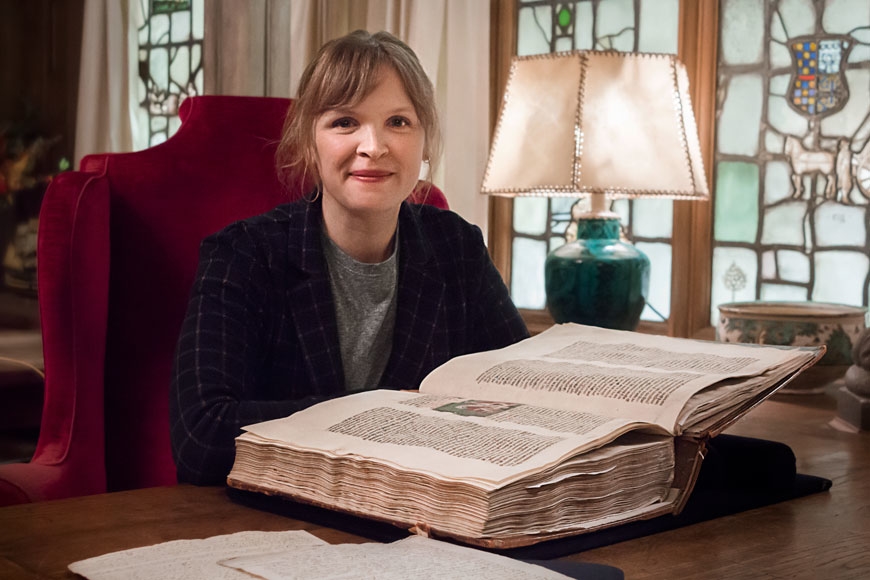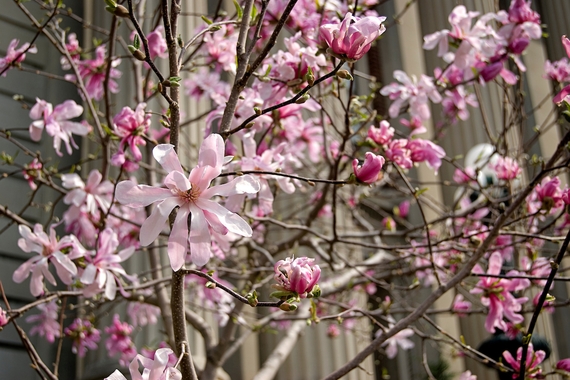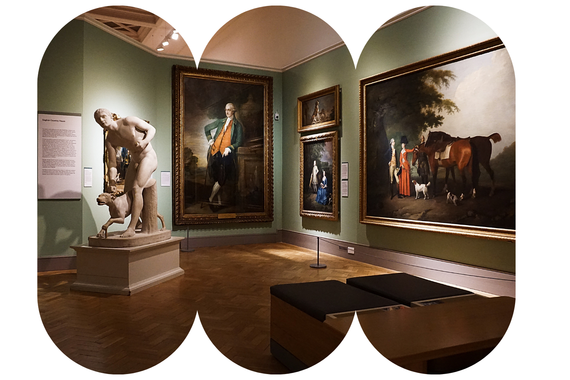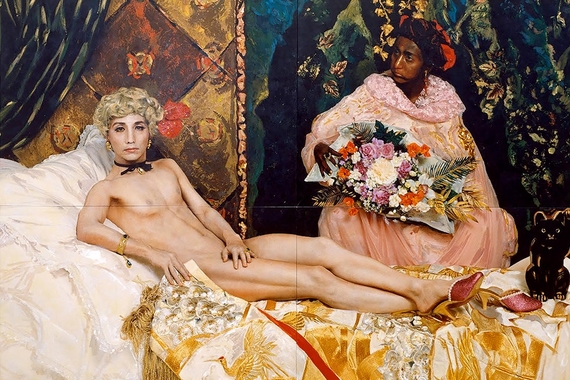Teaching Medieval Art
Jennifer Awes-Freeman is a visiting assistant professor who specializes in medieval art. She attended Bethel University as an undergraduate, majoring in technical theatre with a minor in art history. After working in theatres in the Twin Cities and New York City, she attended the Institute of Sacred Music at Yale Divinity School and earned a master’s degree in art and religion.
She recently completed her doctoral work at Vanderbilt University. Her dissertation is a study of Trinitarian doctrine—the Father, the Son, and the Holy Spirit—and images during the transition from Late Antiquity to the early Middle Ages.
We had the opportunity to talk with Awes-Freeman about her approach to teaching.
How do art and theology connect in your teaching?
When you're teaching the Middle Ages you really have to account for religion in order to be able to understand what’s happening; the majority of the artwork that's produced in the Middle Ages is religious in nature. Therefore, the majority of the content for the course is religious in nature, but we also we talk about politics, gender, race, and other factors.
For example, I dedicate a couple of class sessions to women as artists and patrons in the Middle Ages and to women as visionaries or mystics within the artwork they inspired. I'm also trying to do more with race in the Middle Ages in light of recent rises in explicit and more public white supremacy in America. We talk about the history of race in Europe and how that's understood and depicted in medieval art.
What do you enjoy about teaching at the U?
Not to brag or anything, but University of Minnesota undergraduates are great. It makes it a pleasure to teach. I love working with all the different kinds of people in my classes. Of course, there are students who are art historians or artists, literature students, and so on, but there are also STEM majors who have never taken a humanities course before. And with such a large range of people from around the world, it’s very exciting to draw on the diversity of experiences within the classroom—it’s another resource for teaching.
I think the U’s resources—both for myself as a teacher and for the students—are wonderful. There are so many opportunities for students to get research experience as undergraduates. I did all my study at private institutions, so I was curious to see what it would be like at a state school, especially whether it would feel overwhelming. However, I’ve actually found it to be a place where there is meaningful community. There's a lot of support, so I think it's a great place to be.
What other projects are on the horizon?
In addition to my medieval art survey, this spring I’m going to teach a course at United Theological Seminary of the Twin Cities about medieval women mystics. It will have elements of art history, but it's more of a text-based class. I’ll also teach an arts practicum, which is similar to a studio class for people doing an arts concentration in that program. It's really fun to get back to my own artistic roots in that way.
I'm also working on three book projects. I am adapting my dissertation project for publication as a book, and am also working on a book about the iconography of the Good Shepherd from its Ancient Near Eastern origins to its waning in the Middle Ages. The Good Shepherd motif is most well known for its use in early Christianity, however, the earliest examples date thousands of years before Christianity existed. I try to understand its development as a political and religious symbol and the way it carried multiple meanings in different contexts, cultures, and time periods.
Then I have a Latin translation project: In honorem sanctae crucis (“In honor of the holy cross”) by the Carolingian monk Hrabanus Maurus. The book is a collection of twenty-eight carmina figurata (figural poems), which consist of text overlaid with images. They read left to right, but then also have mini-poems embedded within them—it’s kind of intense.
I've been involved with the Center for Medieval Studies here and will continue to work with them. And I'll be teaching medieval art courses for as long as they’ll have me because I love doing it!
This story was written by an undergraduate student in CLAgency. Meet the team.



